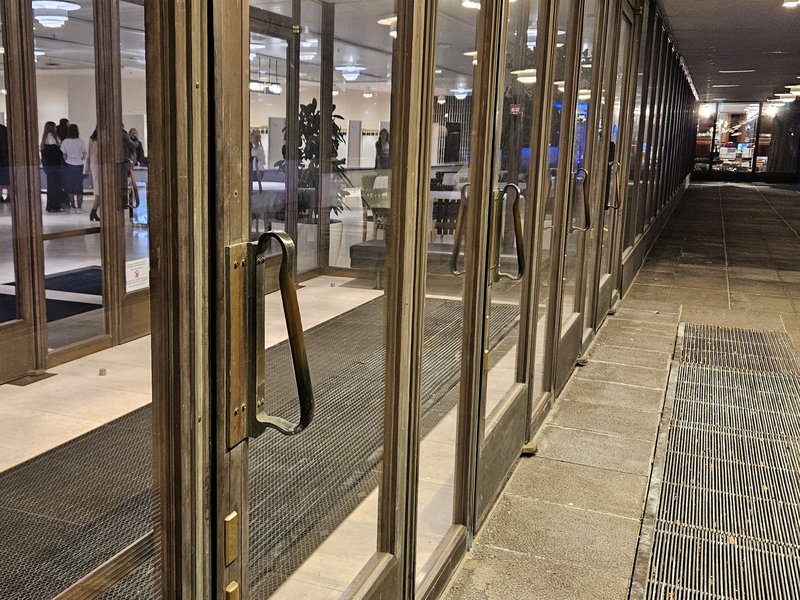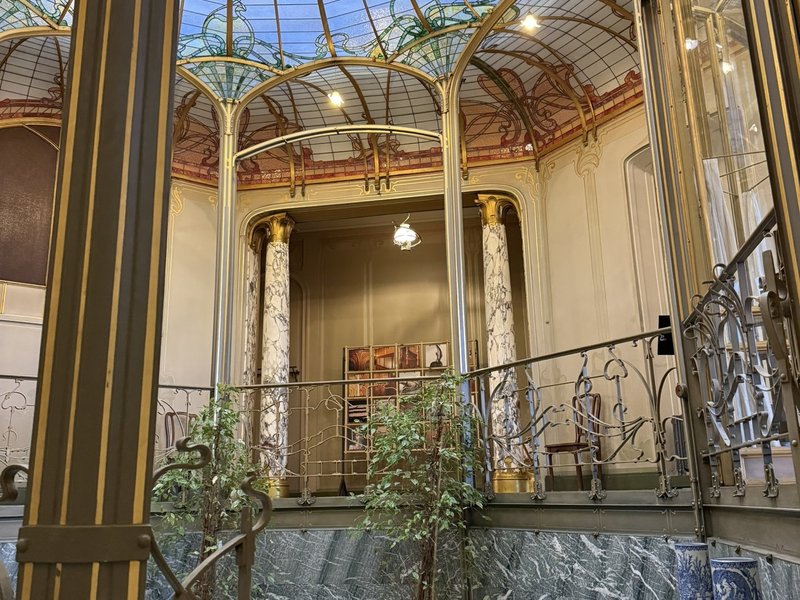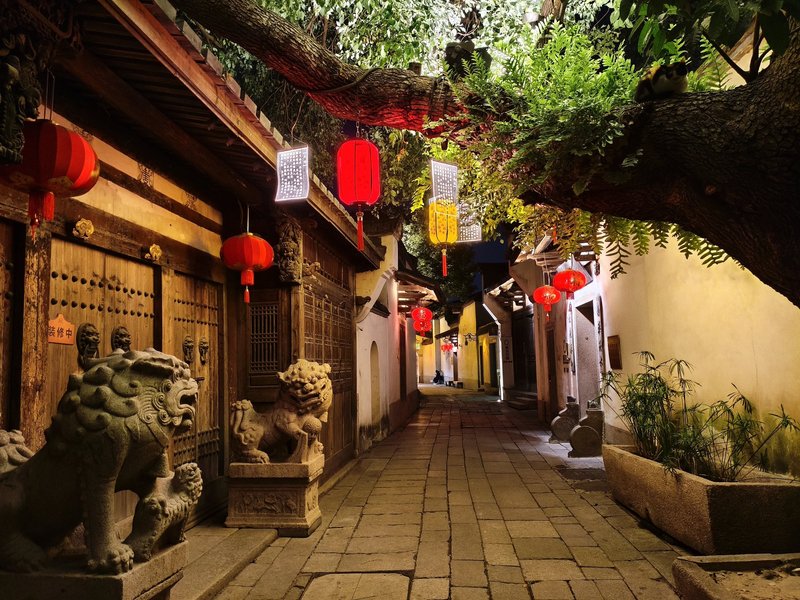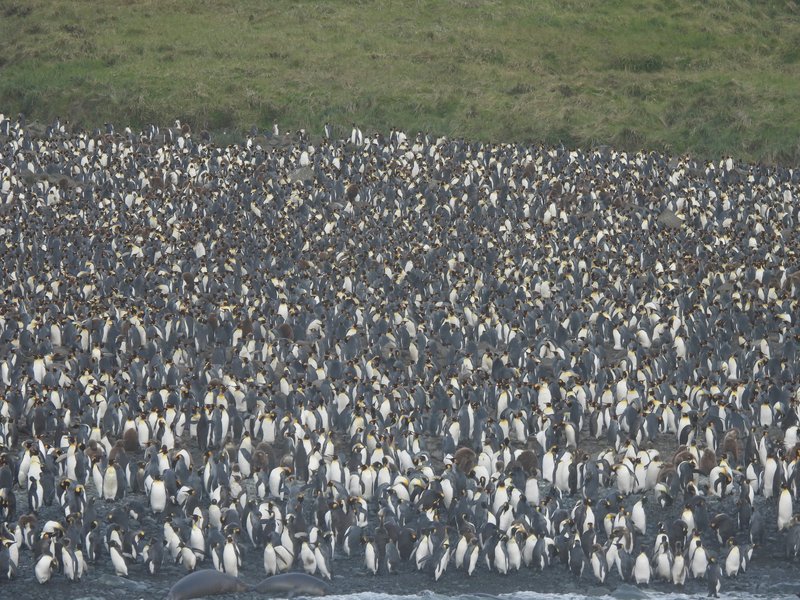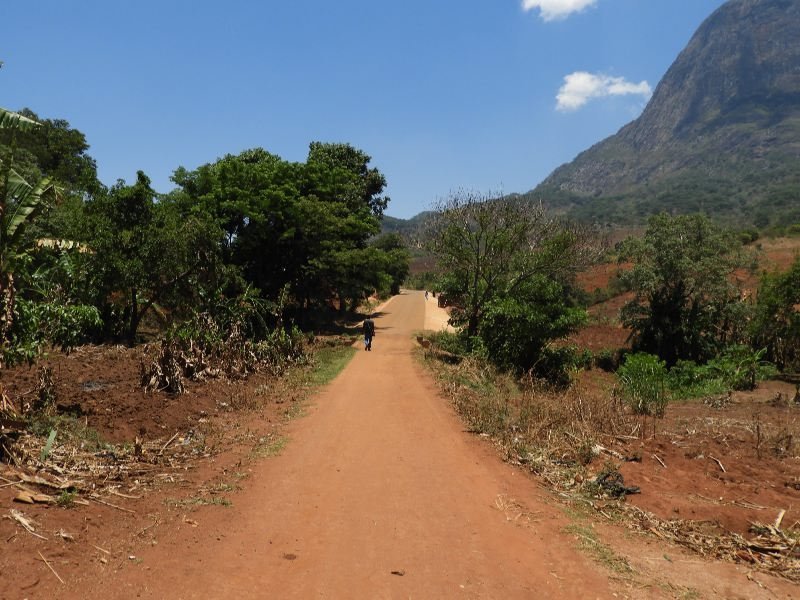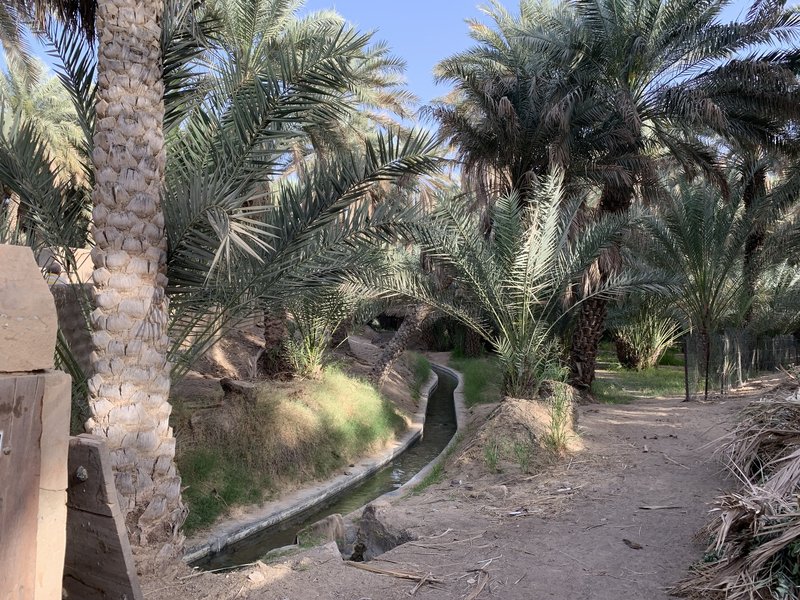Macquarie (pronounced like “mac-QUARRY”, spoken with an Australian accent, and shortened as “Macca”) Island lies about halfway between mainland Australia and Antarctica. For the birds and sea mammals, it is the last place where they can land that is not permanently covered in ice and snow. Like the New Zealand Sub-Antarctic Islands, I visited it as part of an expedition cruise. The Australians are very picky about who they let in; companies have to bid for a quota and show their educational tourism ethos. Recent winners have been Heritage Expeditions (which I used), Ponant and Aurora Expeditions.
As a World Heritage Site, Macquarie has a messy history: IUCN did not really see it ("international geological heritage only") and rejected it in 1992, and "if they insist, they should team up with the New Zealand Subantarctic Islands". In the end (1997), without much supporting documentation available, it was inscribed on both geological and natural beauty criteria:
- It’s a geological unicorn, as it is the only place in the world where a part of the oceanic crust pops out above the sea. It has risen at its spot where the Indo-Australian tectonic plate and the Pacific plate collide.
- It has wild, natural beauty, with vast congregations of wildlife, particularly penguins, during the breeding season.
Notably lacking is criterion X, the floral and faunal diversity, for which it was never proposed but should easily qualify. With the NZL Subs, it has the Centre of Plant Diversity and the megaherbs in common. And to put it boldly: this is simply the best site currently on the World Heritage List to watch and enjoy penguins. With its four different breeding species (one of which is endemic) and two occasional visitor species, it is in the same league as the Antarctic Peninsula and the Falkland Islands. And the colony of some 150,000-280,000 King Penguins at its Lusitania Bay is second only in size to the one at South Georgia.
On the island, which measures 34 by 5 km, we visited three locations across two days: the Isthmus, Sandy Bay and Lusitania Bay.
The Isthmus
The sailing from the Auckland Islands to Macquarie took a full day and two nights. Around breakfast time on the third day, we finally saw land again: the string of peaks and stacks that resembled a spine. So that’s the geological OUV ticked off!
We first went on shore at an area called The Isthmus, a small land bridge in the far north of the island. This is where the Australian scientific base is, permanently occupied by some 20-40 staff. They also have 48 smaller buildings scattered around the island. We were warned not to wander into it or get closer than 1.5m to any of the staff ("don’t hug or kiss a scientist") as they still have COVID regulations. But, like penguins, some came up to us as they hadn’t been seeing anyone else besides their colleagues for 6 months. A note for those who collect stamps in their passports: they do not stamp them here anymore, as the unofficial stamp might invalidate your passport.
We did a walk of about 1.5 hours on this part of the island. Although present on the whole island, the Southern Elephant Seals run the show directly at this landing area. They dump their fat bodies everywhere, mostly having a rest in the grass. They did block the path now and then, but fortunately, they were not as aggressive as the sea lions that we encountered earlier at Enderby Island. Lifting their head already seemed to take a major effort.
The grass is also the favourite place of the Gentoo penguins. This is their only colony on Macquarie Island, staying away from the much larger King penguins and the omnipresent busybodies, the Royal Penguins. Their chicks are very cute, like a stuffed toy.
A flight of stairs brought us to a platform at the top of the ridge, from where there are fine views all along the Isthmus. Large birds took some interest in us and flew by, including light-mantled albatrosses and giant petrels.
Sandy Bay
During lunch time, our ship relocated further south along the coast. Divided into 3 groups, because of the visitor limitations of 75 persons on a landing at a given time, we visited Sandy Bay. This is essentially a long beach where you can roam around freely among the animals, like being a participant in a wildlife documentary. And you just don't know where to start! We enjoyed it so much that we visited it twice: a two-hour session on the first afternoon, and a 1.5-hour session at the end of the next morning.
To the north side of the beach is a large King penguin colony, where they also protect their chicks and eggs. On the way there, you already have to maneuver yourself around the elephant seals and the thousands of penguins milling around.
The colony itself is fenced off by a rope, but you are still getting very close and can sit on a rock to watch. The chicks of the King penguins already grow very large, but have brown, fluffy feathers. Now and then, you see some halfway through the transformation process between chick and adult; they look very odd. This is also the area where the ones that have eggs reside. I searched for a long time to capture one shuffling along with the egg balancing on its feet, but missed that opportunity.
The thing is, you can stand for hours watching this side, but there is a spectacle just as great on the other side of the beach. The way between the two is an adventure in itself, as it crosses a Penguin Alley, where, as a human, you may not stop or sit down; you just shuffle at penguin speed along the shoreline to disturb them the least. This is where you really walk among penguins and these two species (King and Royal) are not bothered at all. The two species seem to endure each other as well, although the larger and more distinguished Kings sometimes pick on the Royals. It is fun to see them land from the water, especially the clumsier Royals; they often get knocked off their feet by a wave but just stand up again and walk on with their mates.
The Kings have another main colony on the South side of Sandy Bay. It is organized similarly to the one at the North. At the outer circle of the huddle, you will find mostly the ones who are changing their plumage. It must itch, as they are picking it constantly. The Royals have their colonies further inland. There is a penguin-pedestrian path that follows a gully and where they march off into the far distance. One of their colonies is visible up against the hill above the plateau.
So far, the Macquarie experience has been all about penguins and seals, but it does have its interesting flora too. Thanks to the eradication of all invasive animal species, notably the rabbits in 2014, the island is becoming green again. Via a flight of stairs next to the Southern penguin colony, you can reach a plateau covered in grass and herbs, mostly Pleurophyllum hookeri. There is also some Macquarie Cabbage (another megaherb) among it, which is an edible plant used as food by the early sailors.
Lusitania Bay
In the very early morning of the second day, at 7 am, we did a zodiac cruise of Lusitania Bay. The ship had moved a bit more south again. From the deck, the spectacle at Lusitania Bay was already well visible. The around 200,000 King penguins in this colony huddle together so closely that landings are not allowed. There just wouldn’t be space to walk! It is the second largest colony after that in Southern Georgia, far surpassing anything found in the Falklands or the Antarctic.
These penguins saw themselves confronted by a large cruise ship and a couple of zodiacs this morning (something that happens only once every 6 months or so). They sent out scouts to look at us, so both the main ship and each zodiac were surrounded by penguins swimming in circles. This was by far the best we saw them in the water; they usually are on business and swim quickly into the ocean, jumping now and then like dolphins. We were lucky that the weather and swell was good enough to go out on the zodiacs, which the cruise company only manages to encounter once in every three or four visits.
The colony itself is one big blob. It is even hard to take pictures of, as there are no individuals visible. What you can see is the variation in colouring: they usually stand facing one way, so you either see the black of their backs or the white of their bellies, and there often is a circle of ‘guards’ facing outward around them. And of course, the chicks are brown in colour.
A strange historical element is visible at this beach as well. There are three huge, rusting cauldrons, which were used from around 1889 to 1920. After the commercial exploiters of the island had already killed about all the fur seals on the island for their fur, they turned their attention to the penguins. These were valuable for the oil. The cauldrons are boiling pots, where they marched in the penguins on one end and where their oil came out at the other end.
The zodiac also brought us to a waterfall, where we could see some Eastern Rockhopper Penguins. These are exclusive to rocks and live in small colonies, so they are harder to see.
Macquarie Island will forever hold a special place in my heart, as it was my 1000th-visited World Heritage Site. And what a first-class choice it turned out to be!
